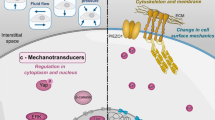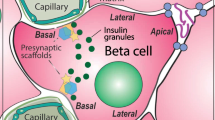Abstract
To investigate mechanisms of capillary network remodeling, we developed a serum-free angiogenesis in vitro system in three-dimensional fibrin matrices which allows the study of directional growth of endothelial sprouts, anastomosis, and remodeling (’pruning’) of the primitive plexus toward more elaborated capillary trees. To follow the movements of living endothelial cells by inverse-fluorescence microscopy, we cocultured unlabeled endothelial cells with endothelial cells labeled with the carbocyanine dye 1,1′-dioctadecyl-3,3,3′,3′-tetramethylindocarbocyanine perchlorate (DiI). We show that elongation and retraction of neighboring capillary sprouts occurs simultaneously, resembling a tug-of-war by which endothelial cells are withdrawn from shortening sprouts to become incorporated in other sprouts nearby. For the first time, we directly demonstrate the long-suspected parallel sliding movement of endothelial cells. We show that cell migration persists within immature capillaries even after sprouts have merged to continuous capillary loops, leading to overlapping growth of opposing sprout tips. As a novel concept of capillary remodeling, we distinguish two types of endothelial cell migration: sprouting and guided migration. Sprouting is the de novo invasion of a matrix by endothelial cells, and guided migration is the locomotion of cells along preexistent capillary-like structures. We show that guided migration leads to remodeling of immature capillary networks and to the retraction of sprouts. We describe a method for quantification of sprouting versus guided migration in DiI-mosaic-labeled capillary networks, and we present evidence that endothelial cell-derived basic fibroblast growth factor serves as a chemotactic signal for other cells to migrate along a preestablished capillary-like structure.
Similar content being viewed by others
Author information
Authors and Affiliations
Additional information
Accepted: 3 November 1997
Rights and permissions
About this article
Cite this article
Nehls, V., Herrmann, R. & Hühnken, M. Guided migration as a novel mechanism of capillary network remodeling is regulated by basic fibroblast growth factor. Histochemistry 109, 319–329 (1998). https://doi.org/10.1007/s004180050232
Issue Date:
DOI: https://doi.org/10.1007/s004180050232




